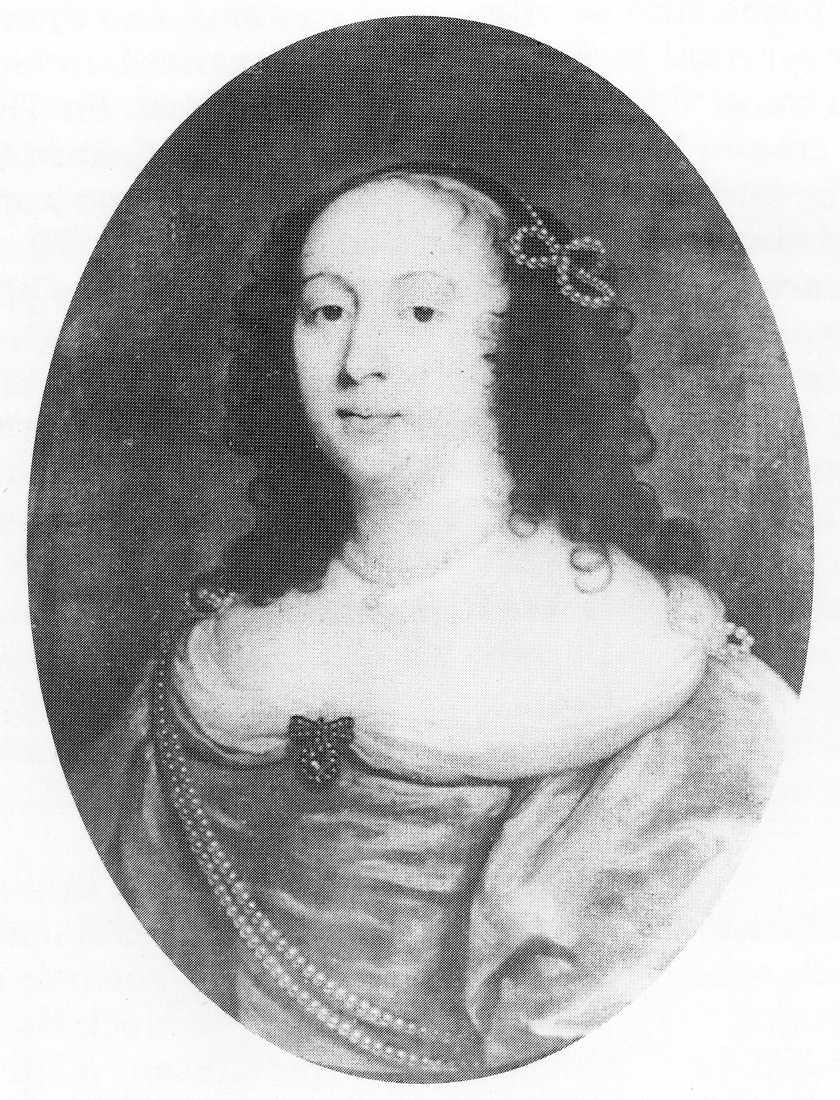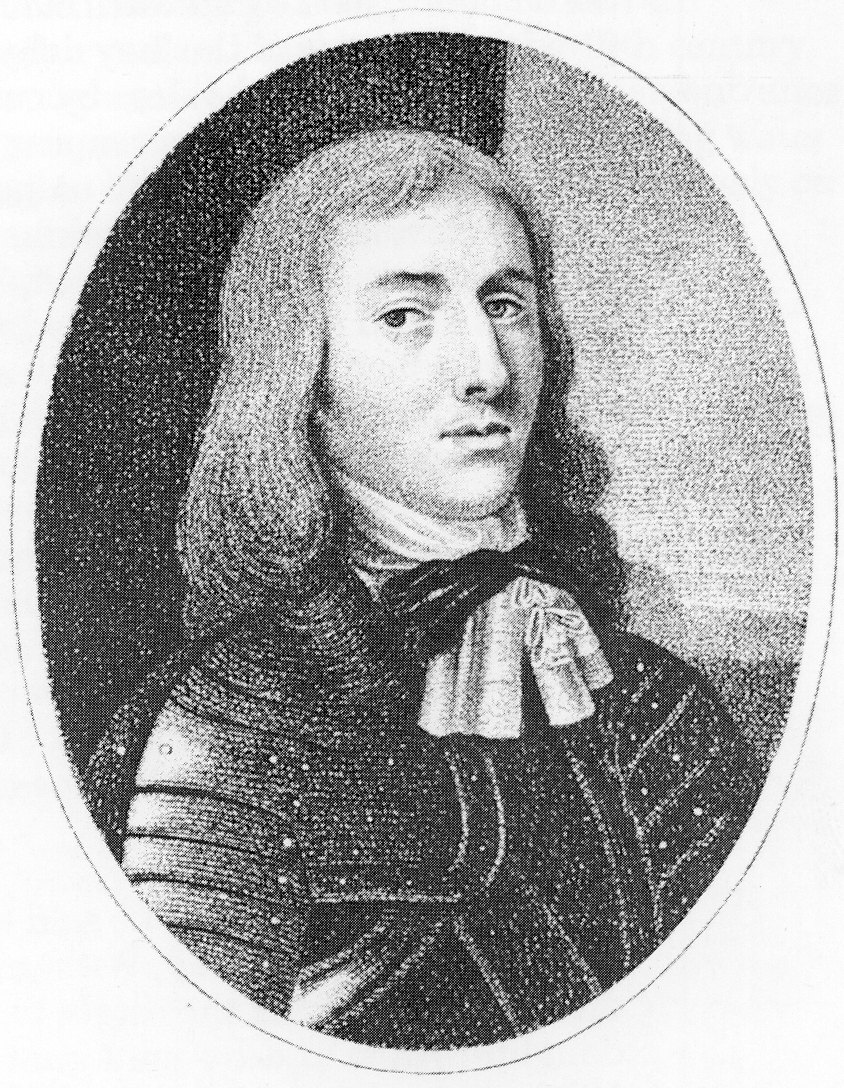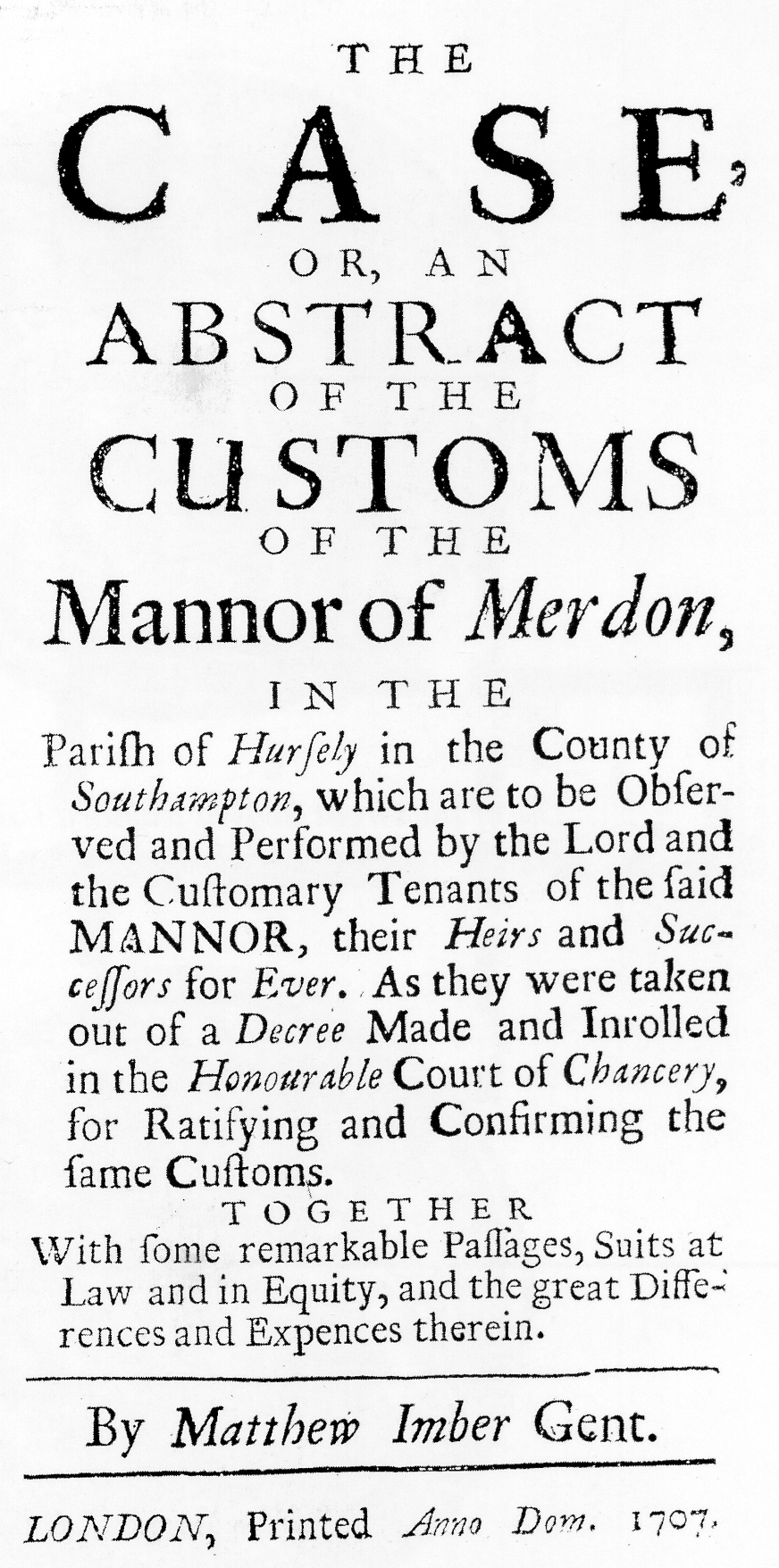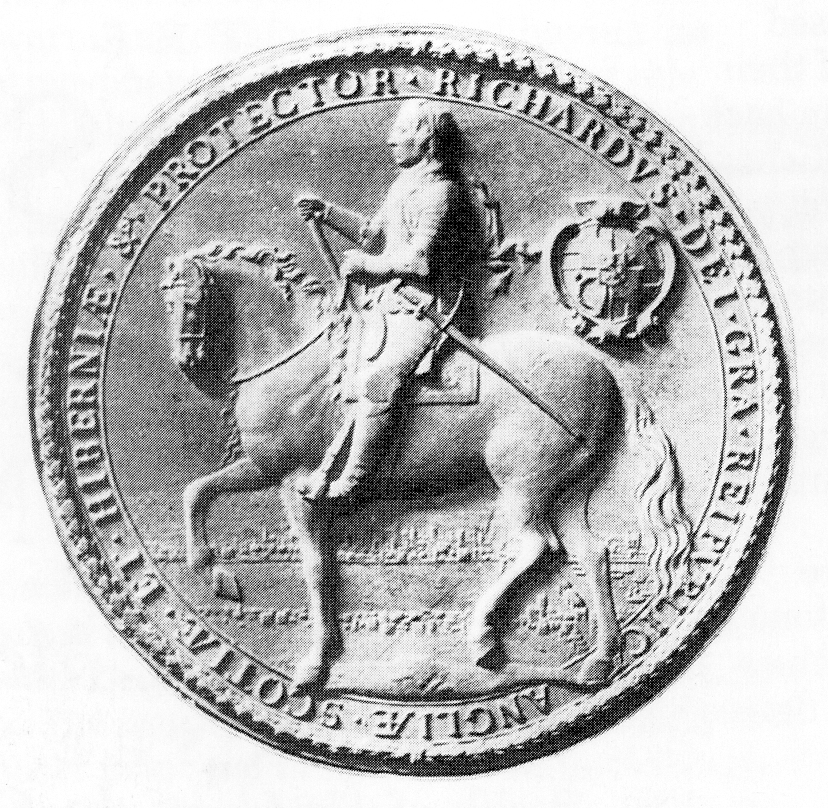The Cromwell Family
[...end of missing page 27]
monarchy. Because of the continuing hostility and his considerable debts, he withdrew from Parliament on 25 May 1659, and lived in quiet seclusion at Hursley before departing for France a year later. Accounts differ as to where he lived with his wife on the continent under the name John Clerke. Mrs Cromwell’s portrait came to light in France in the 1970s. During his twenty years in exile he wrote numerous letters to his family, and was greatly concerned over their welfare. His wife died in 1674/76, which added to his sadness at being in exile. He was long regarded as a dangerous person by the government, who in 1671 made a strict search for him ‘but without avail’. So Richard’s cover must have been effective.
 Dorothy Cromwell (wife of Richard)
Dorothy Cromwell (wife of Richard)
 Richard Cromwell, Lord Protector c. 1658
Richard Cromwell, Lord Protector c. 1658
After the death of Dorothy Cromwell, their eldest son Oliver ‘claimed Merdon in right of her marriage settlement’ and took possession of the estate. It seems that Oliver Cromwell II was a rather spineless character with a butterfly personality, who managed to degrade further the poor relationships with the copyholders.
His father Richard probably thought that, since young Oliver had set his mind on Merdon, this might be the opportunity he needed to do something useful; so he did not contest his claim. However, the oppressed tenants, seeing no end to the erosion of their rights and privileges, determined to win back some essential rights they had lost to Richard Major and the previous manor lords. No doubt they reckoned that with the young Oliver’s character they stood a good chance of success, and in 1692 a chancery suit was in progress which lasted until 1705, a few months after Oliver’s death. Despite the proceedings being drawn out, the tenants did regain many of their rights. They also established in law a yardstick for future generations of tenants - an early milestone in the quest for civil rights. In 1707, ‘Matthew Imber (Gent.)’ translated the chancery decree called ‘The Case, or an Abstract of the Customs of the Manor of Merdon’ from ‘chancery hand’ and Latin into English for the benefit of the tenants. About 80 of these translations were published and today they have become a much sought-after legal artefact.
 Title leaf of the customs of the Manor of
Merdon, 1707.
Title leaf of the customs of the Manor of
Merdon, 1707.
After his son’s death, poor Richard Cromwell was in conflict with his two surviving daughters Elizabeth and Anne who considered themselves to be the heirs of their brother. Because they were already in residence, they disputed their father’s claim and so Richard instituted proceedings against his daughters, and was obliged to appear at Westminster Hall, where Lord Chief Justice Holt treated him with much respect and made an order in his favour. Richard was then entitled to live at Hursley as lord of the manor. He also spent some of his time at his other house at Cheshunt where he eventually died on 12th July 1712 at the age of 86. He was duly interred with much pomp and ceremony in the chancel of Hursley church near his wife. His daughters inherited the estate, but they lived at Hursley for only a few years before selling the whole manor in 1718 for £35,100 to William Heathcote who was later created a baronet in 1733. It was this Sir William Heathcote who had the Great Lodge demolished because it was in a ruinous state; the proposed renovation and alterations did not satisfy his requirements and were too costly. During the demolition of the Great Lodge, the die of the Great Seal of the Commonwealth was found in a crevice in a wall. It is believed that Richard Cromwell took the die from Parliament and hid it for his own security.

 Die of the Great Seal of Richard Cromwell,
Lord Protector c. 1658. (Diameter 14 cms, 5.6”)
Die of the Great Seal of Richard Cromwell,
Lord Protector c. 1658. (Diameter 14 cms, 5.6”)